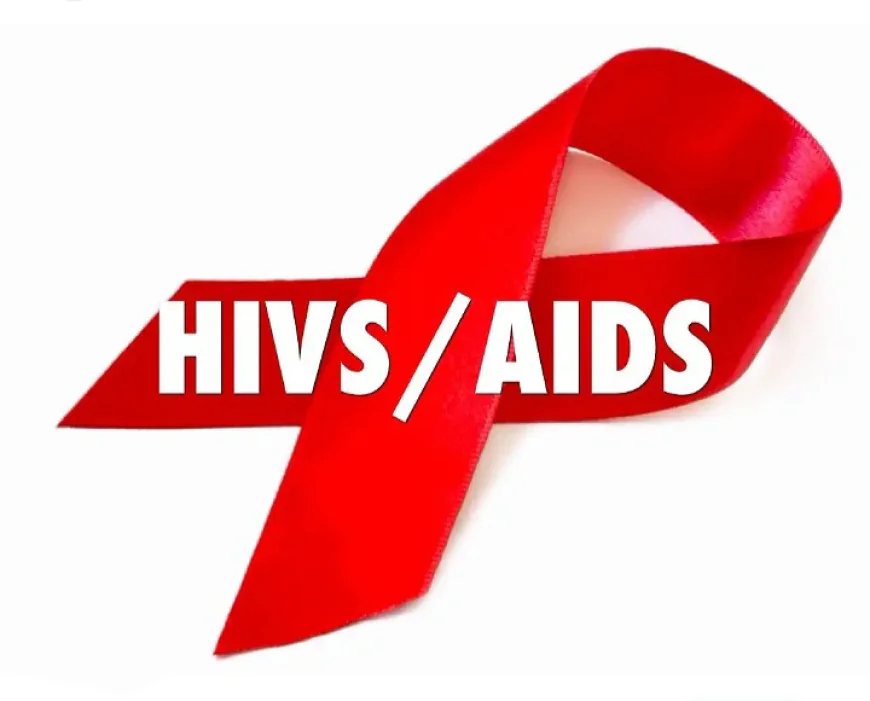Ghana AIDS Commission Sounds Alarm as Over Half of HIV Patients Remain Untreated
52.6% of People Living with HIV Not on Life-Saving Therapy; 15,290 New Infections Recorded in 2024 Alone

The Ghana AIDS Commission (GAC) has issued a dire warning over the country’s HIV treatment response, revealing that more than half of people living with HIV are not receiving antiretroviral therapy (ART)—a life-saving treatment essential to controlling the virus and preventing AIDS-related deaths.
Speaking at a press briefing in Accra on Wednesday, July 3, for the official release of the 2024 National and Sub-National HIV Estimates and Projections, officials from the GAC described the situation as “alarming” and a major threat to the country’s public health and development goals.
“This is not just a health crisis for those infected; it endangers the entire population, including those not living with HIV,”
said Isaiah Doe Kwao, Director of Research, Monitoring and Evaluation at the Commission.
■ Over 50% Left Untreated
Out of an estimated population of Ghanaians living with HIV, only 334,721 individuals—just 47%—are currently on ART, while 52.6% remain untreated. The Commission stressed that this shortfall puts thousands at risk of illness and death and jeopardizes Ghana’s ability to contain the virus's spread.
In 2024, 15,290 new HIV infections were recorded, with 12,614 AIDS-related deaths, though 12,358 deaths were prevented due to ART.
■ Women and Children Disproportionately Affected
The report also highlights the disproportionate impact on women and children:
● 68.5% of new infections (10,303 cases) occurred in females.
● 5.4% (1,243 cases) involved children under 15.
● While 99.3% of HIV-positive pregnant women accessed prevention of mother-to-child transmission (PMTCT) services, the Commission stressed the need for improved follow-up care to safeguard long-term outcomes.
■ Systemic and Social Barriers Undermining Progress
Deputy Chief of Staff, Nana Oye Bampoe Addo, blamed the treatment gap on a combination of stigma, misinformation, economic hardship, under-resourced health systems, and a recent suspension of international donor support, especially from USAID.
“These challenges have compounded to slow down our progress. But we remain resolute,” she said.
“No one should be left behind.”
She reiterated government plans to secure domestic funding, integrate HIV services into broader health strategies, and use data to drive smarter service delivery.
“Every HIV-positive person not on treatment is one step closer to advanced illness and possible AIDS-related death,” she warned.
“This is unacceptable in today’s world.”
■ Ghana Missing Global 95-95-95 HIV Target
Ghana is currently off-track in meeting the UNAIDS 95-95-95 target, which aims by 2025 to ensure:
● 95% of people living with HIV know their status,
● 95% of those diagnosed are on treatment, and
● 95% of those on treatment achieve viral suppression.
■ Regional Breakdown of New Infections (2024)
The data also revealed regional disparities in new infections:
▪︎ Greater Accra – 3,436 cases
▪︎ Ashanti Region – 2,997
▪︎ Eastern Region – 2,019
▪︎ Central Region – 1,140
▪︎ Western Region – 1,120
▪︎ Bono Region – 875
▪︎ Volta Region – 809
▪︎ Bono East – 649
▪︎ Western North – 478
▪︎ Ahafo Region – 350
▪︎ Upper East – 345
▪︎ Northern Region – 318
▪︎ Upper West – 292
▪︎ Oti Region – 222
▪︎ Savannah Region – 143
▪︎ North East Region – 97
■ The Way Forward
The GAC reaffirmed its commitment to working with health institutions, civil society, and international partners to close the treatment gap, eliminate stigma, and end AIDS by 2030.
“This is a national emergency that requires urgent collective action,” Mr. Kwao concluded.
“Lives depend on it.”


